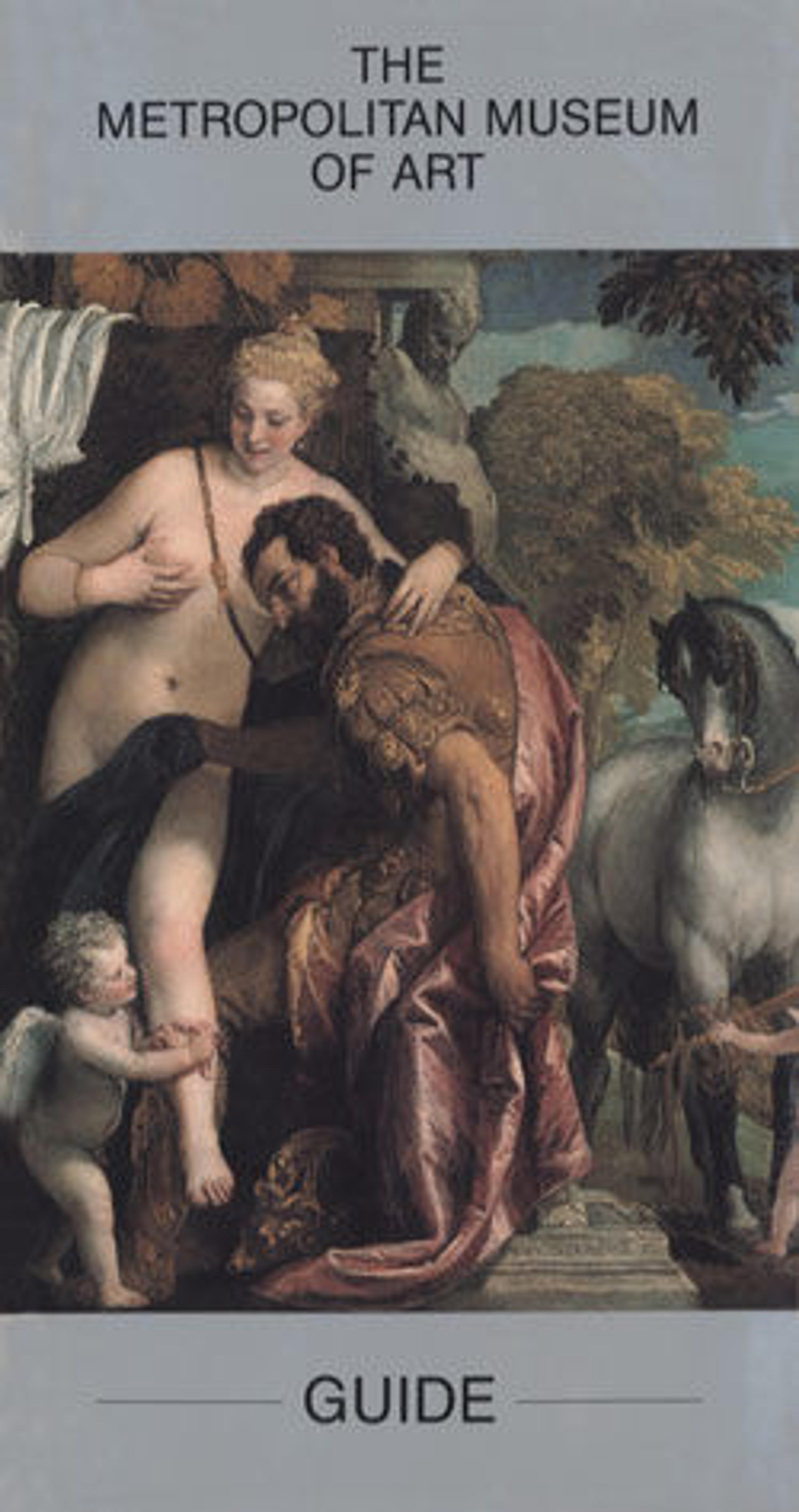Noh Robe (Karaori) with Pattern of Bamboo and Young Pines on Bands of Red and White
This resplendent Noh costume presents a wealth of auspicious symbolism on a background of horizontal bands. Green and gold pine and bamboo flourish on the wintry white bands, and continuous golden patterns of hexagons and interlocking circles grace the red. Pine and bamboo, also seen on the smaller robe shown in this case, traditionally represent winter and a joyous new year. The hexagonal pattern is associated with longevity because of its similarity to a turtle's shell, and the design of interlocking circles, termed shippō (literally, "seven treasures"), lends an aura of prosperity. The resist-dyeing of the warps, reserved in white and dyed in red, imparts a pleasing softness to the boundaries between the bands.
Artwork Details
- 紅白段竹若松模様唐織
- Title: Noh Robe (Karaori) with Pattern of Bamboo and Young Pines on Bands of Red and White
- Period: Edo period (1615–1868)
- Date: 19th century
- Culture: Japan
- Medium: Silk twill weave with resist-dyed warps and supplementary weft patterning (karaori)
- Dimensions: Overall: 65 1/4 x 54 in. (165.7 x 137.2 cm)
- Classification: Costumes
- Credit Line: Purchase, Gift of Mrs. Russell Sage, by exchange, 1979
- Object Number: 1979.408
- Curatorial Department: Asian Art
More Artwork
Research Resources
The Met provides unparalleled resources for research and welcomes an international community of students and scholars. The Met's Open Access API is where creators and researchers can connect to the The Met collection. Open Access data and public domain images are available for unrestricted commercial and noncommercial use without permission or fee.
To request images under copyright and other restrictions, please use this Image Request form.
Feedback
We continue to research and examine historical and cultural context for objects in The Met collection. If you have comments or questions about this object record, please contact us using the form below. The Museum looks forward to receiving your comments.
